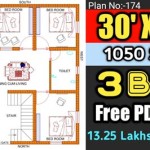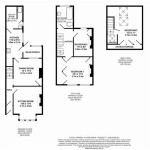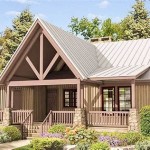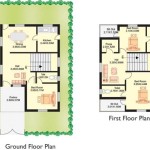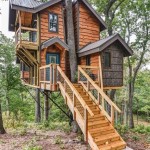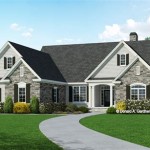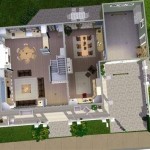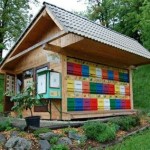Row House Plan Layout: Optimizing Space and Functionality
Row houses, also known as townhouses, present unique design challenges and opportunities. Their narrow footprints and shared walls necessitate clever planning to maximize space utilization and create functional, comfortable living environments. Understanding the key principles of row house plan layouts is essential for both homeowners and developers.
One of the primary considerations in row house design is the efficient use of vertical space. With limited horizontal expansion, maximizing verticality becomes crucial. This often translates to multi-story designs, incorporating basements for storage or additional living areas, and utilizing attics for similar purposes. Careful consideration of stair placement is vital, aiming to minimize their footprint while ensuring safe and convenient access to different levels.
Natural light is another critical aspect. With windows typically limited to the front and rear facades, strategic placement and sizing are essential to bring ample light into the interior. Open-plan layouts, particularly on the main living floor, can help distribute natural light effectively. Skylights, light wells, and strategically placed mirrors can also enhance interior brightness and create a sense of spaciousness.
Privacy is a significant concern in row house living. Shared walls necessitate careful consideration of sound insulation. Using appropriate building materials and construction techniques can minimize noise transfer between units. Floor plans should also be designed to position bedrooms away from shared walls, prioritizing quiet spaces for rest. Landscaping and fencing can also contribute to privacy in outdoor areas.
The typical row house layout often features a linear arrangement of rooms, with living spaces at the front, dining areas in the middle, and kitchens towards the rear. This traditional layout can be adapted to suit modern lifestyles and preferences. Open-plan concepts can be incorporated, merging living, dining, and kitchen areas to create a more spacious and social environment. However, maintaining defined zones within these open spaces is important to retain functionality and prevent a sense of clutter.
Storage solutions are paramount in row house design. Limited square footage requires creative approaches to storage. Built-in wardrobes, under-stair storage, and strategically placed shelving can maximize space utilization. Multi-functional furniture, such as ottomans with hidden storage, can also contribute to a clutter-free environment.
Outdoor space, although often limited, can significantly enhance the livability of a row house. Small patios, balconies, or rooftop terraces can provide valuable outdoor retreats. Vertical gardening and strategically placed planters can maximize greenery and create a sense of nature within a confined space.
Accessibility is an important factor to consider, especially in multi-story designs. Ensuring that staircases are appropriately designed for ease of use and considering the incorporation of elevators or lifts, where feasible, can enhance accessibility for residents of all ages and abilities.
Building regulations and local codes play a significant role in row house design. Fire safety regulations often dictate the materials used and the placement of fire escapes. Zoning regulations may also influence the height and setback requirements of the building. Adhering to these regulations is crucial to ensure the safety and legality of the construction.
Sustainability is an increasingly important consideration in modern row house design. Incorporating energy-efficient appliances, utilizing sustainable building materials, and implementing passive solar design principles can minimize the environmental impact of the dwelling and reduce long-term operating costs.
Flexibility and adaptability are key principles for successful row house design. Creating spaces that can evolve and adapt to changing needs and lifestyles is essential. Modular furniture, flexible partitioning systems, and adaptable layouts can contribute to the long-term functionality of the home.
The design process for a row house should involve a collaborative approach between the architect, the developer, and, ideally, the future homeowner. Understanding the specific needs and preferences of the occupants is crucial to creating a truly functional and comfortable living space.
Careful consideration of these factors can contribute to the creation of row house plans that maximize space utilization, enhance natural light, prioritize privacy, and provide comfortable and functional living environments. The successful design of a row house balances the constraints of a narrow footprint with the opportunity to create innovative and efficient living spaces.

Traditional And Modern Row Houses Urban Dwellings With Lots Of Style House Design Home Plans

Row House Plan Services At Best In Mumbai Id 10723797512

Image Result For Row House Plans In 800 Sq Ft Affordable Design Map

Exterior Of The Row House Figure 2 Floor Plans Scientific Diagram

What Is Row House 2024 Best Designs Features Benefits

Modern Townhouse Design Brick Row House New Town Home Development Model Plan Floor Plans

Row House Layout Plan Cadbull

Make Row House Plan

27 X58 Row House Plan Is Given In This Autocad Drawing File Now Cadbull

Casa De 1 Andar Com 3 Quartos Row House Design Unique Plans Model Plan

